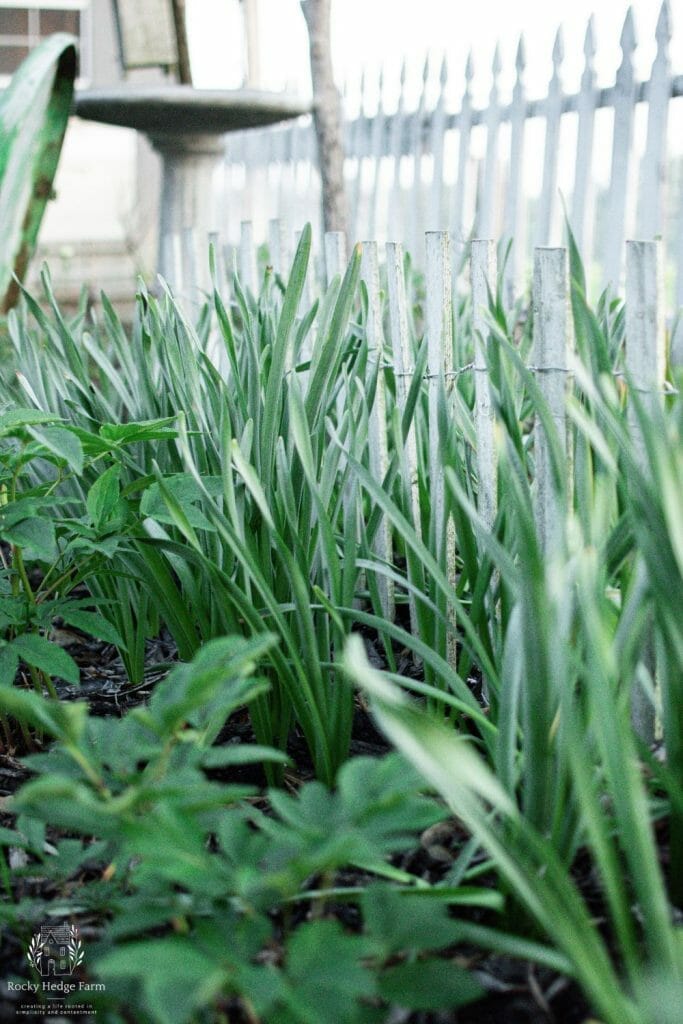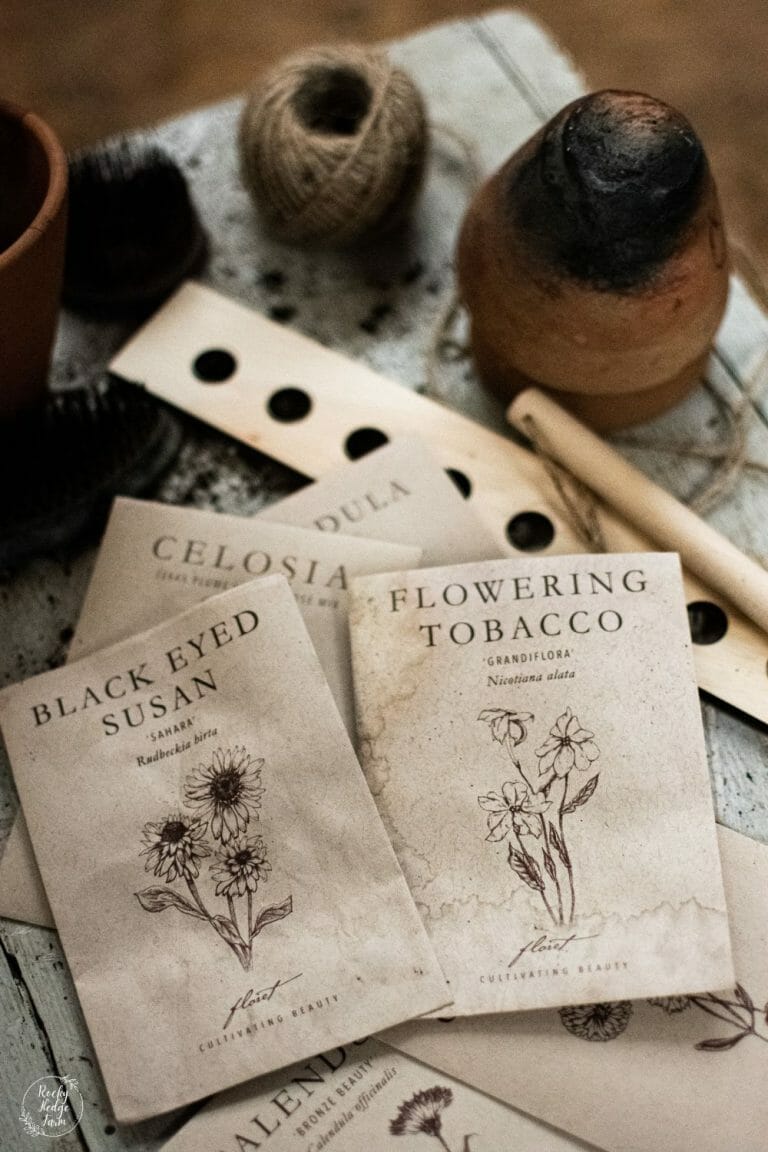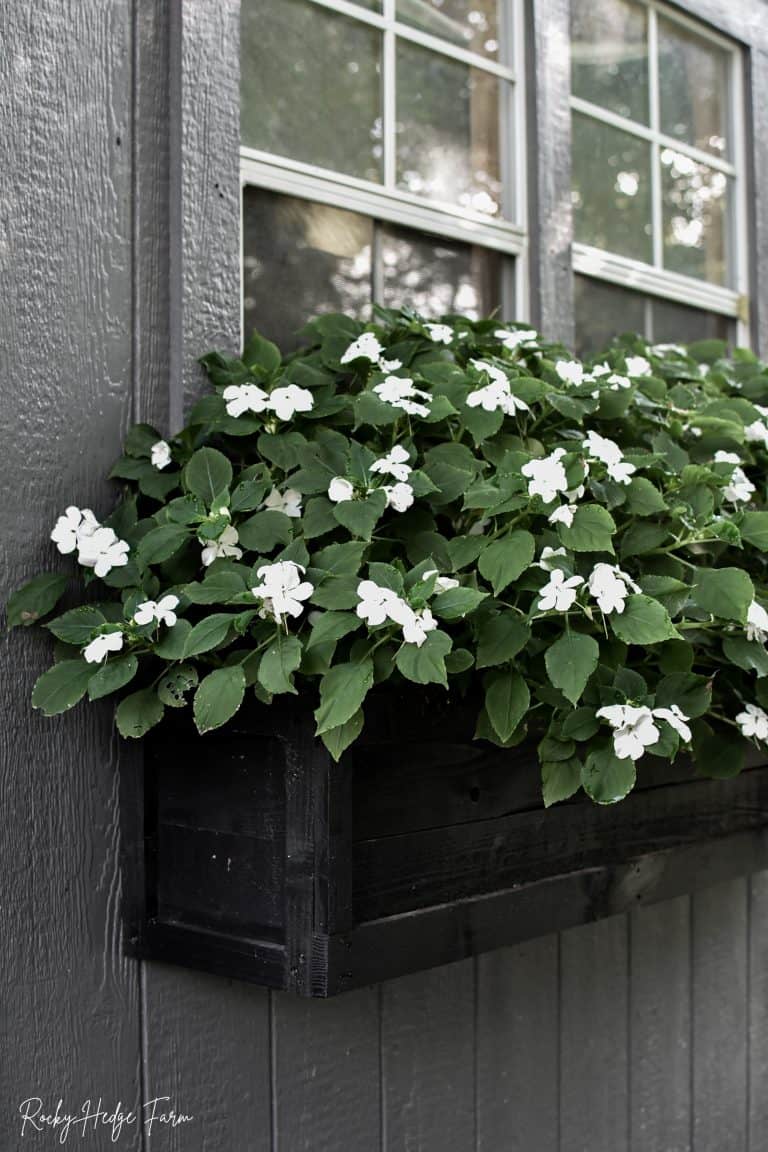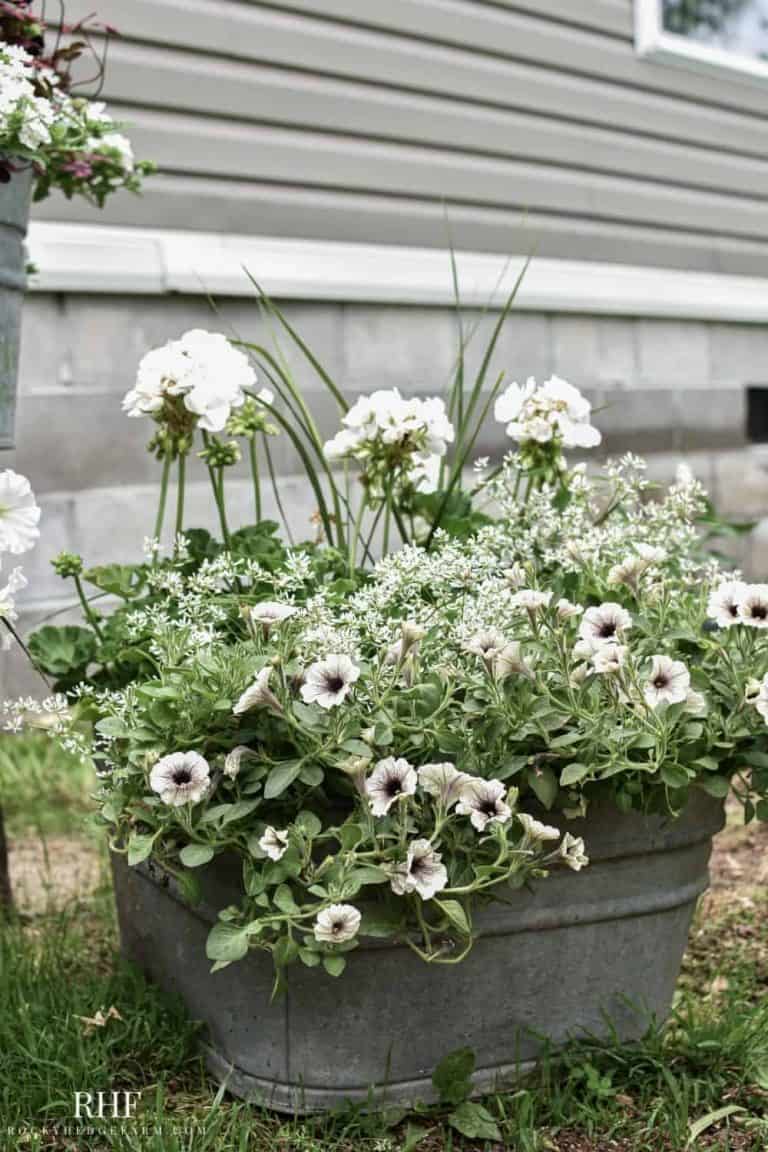What to Do With Daffodils After Flowering
Have you been captivated by the stunning beauty of daffodils in full bloom, but now find yourself wondering what to do with daffodils after flowering?

As a gardener who grew daffodils for the first time this year in my cut flower garden, I discovered the sheer joy they bring with their sunny colors and delicate petals.
Daffodil flowers are much-loved. Generations of people have enjoyed planting and caring for them because they are easy to grow. Compared to other perennial bulbs, daffodils are the champions of low-maintenance flowers.
Once you plant them, you can forget about them and still enjoy their beauty year after year.
In this guide, I will share my insights and experiences on what to do with daffodils after flowering so you can nurture these wonderful flowers for long-lasting enjoyment in your garden.


About Daffodils
Daffodils, scientifically known as Narcissus, are beautiful spring-flowering bulbs. Daffodils are highly appreciated for their vibrant colors, delightful fragrance, and early blooming, making them a cherished symbol of spring.
These perennial plants typically feature long, slender green stems with a single flower per stem. A trumpet-shaped central cup characterizes the beautiful flowers.
The petals come in various colors, including shades of yellow, white, and orange, often with contrasting or complementary hues.
One of the remarkable aspects of daffodils is their wide range of cultivars. Over the years, extensive breeding efforts have resulted in diverse daffodil varieties, including large-cupped, small-cupped, double-flowered, and multi-headed varieties.
Daffodils are known for their resilience and adaptability, making them suitable for various climates and growing conditions. They prefer well-draining soil and thrive in full sun or partially shaded areas.
Daffodils are typically planted in the fall, allowing their bulbs to establish root systems during winter and bloom in early spring.


The Importance of Daffodil Leaves
Daffodils are cherished for their vibrant blooms, but it is important not to overlook the significance of their leaves. The leaves of daffodils play a crucial role in the plant’s overall health and future blooming success.
Understanding the importance of daffodil leaves can help you provide the care they need for optimal growth.
One of the primary functions of daffodil leaves is photosynthesis. These long, slender leaves act as little solar panels, absorbing sunlight and converting it into energy through photosynthesis.
This energy is then stored in the bulb, fueling the plant’s growth and ensuring its ability to produce next year’s blooms.
Moreover, daffodil leaves serve as a nutrient powerhouse. They collect essential nutrients from the soil and transport them to the bulb, where they are stored for future use.
During the post-bloom period, when the flowers have faded, the leaves continue to absorb nutrients and replenish the bulb, preparing it for the next growth cycle.
It is important to allow daffodil leaves to complete their life cycle naturally. As the blooms fade, the leaves gradually turn yellow and wither.
Resist the urge to remove or cut down daffodil leaves prematurely, disrupting the plant’s natural process and weakening its future performance.
Instead, let the leaves wither and die back on their own. If their appearance bothers you, consider planting companion plants around the daffodils to provide visual distraction and cover.

How Do Daffodils Grow
Like most bulbous plants, daffodils have a unique growth pattern that allows them to thrive and bloom year after year. Here is an overview of how daffodils grow:
- Bulb Formation: Daffodils start growing as bulbs, which have all the nutrients they need. The plant stores these nutrients in the bulb during the previous growing season to prepare for the next cycle.
- Dormancy: During winter, daffodil bulbs take a break and go into a dormant period. They rest underground, protected from the cold weather and other tough conditions.
- Emergence: When spring comes and it gets warmer, daffodils wake up from their sleep. Green shoots start pushing up through the soil, signaling the beginning of their growth.
- Foliage Growth: As the shoots emerge, they grow into long, slender leaves. These leaves are green and important for the plant to capture sunlight and make food for itself.
- Flower Bud Formation: Alongside the growth of leaves, flower buds begin to form at the center of the plant. These buds are protected until they are ready to bloom.
- Flowering: When the time is right, daffodils bloom, showing off their unique trumpet-shaped flowers. Different types of daffodils have different colors and sizes. You can expect them to bloom from early to late spring.
- Withering and Dormancy: After the flowers bloom, they wither and fade away. The leaves gradually turn yellow and die back. This process allows the plant to return energy to the bulb for the following spring.
- Bulb Multiplication: Over time, daffodil bulbs multiply and produce smaller bulbs called offsets. These offsets grow next to the parent bulb and can be separated to create new daffodil plants.

what to do with daffodils after flowering
After the blossoms of daffodils have faded, it’s important to provide proper care to ensure the health of the bulbs. Here are some recommended steps for what to do with daffodils after flowering:
Deadheading Daffodils After Blooming
When daffodil blooms start to fade, it’s time to deadhead them. Hold the stem and gently grab the faded flower heads with your other hand.
Follow the stem down to the base of the plant and carefully snap off the dead flowers using your fingers. If you prefer, you can use clean garden scissors or pruning shears to make a clean cut just above the base of the plant.
Leave the Foliage Intact
Although removing the foliage right after the flowers fade may be tempting, it’s important to leave it be. The green leaves still have work to do—they continue to photosynthesize and create energy that gets stored in the bulbs for future growth and blooming.
When it comes to daffodils, it’s important to avoid braiding, bending, or cutting the foliage. Braiding or bending the foliage can disrupt the natural flow of nutrients and hinder the plant’s ability to produce energy.
Avoid Mowing or Cutting the Foliage
If you have daffodils growing in your yard, it is important not to mow or cut the daffodil foliage too soon. Let the leaves wither on their own.
This may take several weeks, but it’s worth the wait. The withering process allows the nutrients in the leaves to go back into the bulb, making it stronger for the next growing season.
Removing the foliage too early can weaken the bulb and affect how well the daffodils grow and bloom in the future. So, let nature take its course before tidying up the daffodils.
Watering and Fertilizing Daffodils After Flowering
While the foliage is still green, water daffodils regularly, especially during dry periods. Adequate moisture supports the bulb’s development.
You can also apply a slow-release bulb fertilizer to replenish essential nutrients according to the product instructions.

Dividing and Transplanting Daffodils After Flowering
If your daffodil clumps have become overcrowded or you want to propagate new plants, you can divide and transplant the bulbs.
The best time to divide daffodils is in late summer or early fall when the foliage has fully withered. This timing allows the bulbs to go through their natural dormant period before the next growing season.
To begin the process, carefully dig up the clumps using a garden fork or shovel, taking care not to damage the bulbs.
Once the clumps are lifted, gently separate the bulbs, ensuring each division has roots and healthy foliage. If the bulbs are densely packed, you may need to use your hands or a tool like a garden knife to untangle them carefully.
Once you have dug the narcissus bulbs, you have two options: transplant them immediately or prepare them for storage.
Bulb Storage for Daffodils
First and foremost, make sure the daffodil bulbs are fully mature and dry before storing them. Allow the foliage to wither completely and the bulbs to naturally detach from the stems.
Once the bulbs are ready for storage, gently remove any excess soil, not damaging the bulb.
Next, find a suitable storage container that provides good ventilation. Avoid using sealed plastic bags or airtight containers, which can create excess moisture and lead to bulb rot.
Instead, opt for a breathable container, such as a mesh bag or a wooden crate, that allows good air circulation and prevents excessive humidity buildup.
Choose a cool and dry location for storing the bulbs. Ideally, the temperature should be around 50-60°F (10-15°C) to keep the bulbs dormant and prevent premature sprouting.
Choose locations with consistent temperatures and avoid exposing the bulbs to direct sunlight, as these conditions can harm the quality of the bulbs.
Regularly inspect the stored bulbs during the storage period. Check for any signs of rot, mold, or damage. If you notice any diseased bulbs, remove them.

When Can You Remove Daffodil Leaves?
Daffodil leaves should not be removed until they have turned completely yellow or brown. This usually takes around six weeks after the flowers have faded. Removing the leaves prematurely can weaken the bulbs and affect next year’s bloom.
What to Plant After Daffodils Flower
If you want to leave your daffodil bulbs in the ground and need to cover up the dying foliage, there are several plants you can consider planting around them.
These plants will help provide a visual distraction while the daffodil foliage withers away. Here are some options:
Roses: Planting roses near your daffodils can add a touch of elegance to your garden. Their lush foliage and vibrant blooms can help divert attention from the dying daffodil foliage.
Hydrangeas: Hydrangeas are known for their large, showy flower clusters and dense foliage. Planting them around daffodils can create a beautiful backdrop and help hide the fading leaves.
Peonies: With their large, fragrant flowers and lush foliage, peonies can provide a stunning display while camouflaging the daffodil foliage. Choose peony varieties that bloom after daffodils, ensuring continuous color in your spring garden.
Dahlias: Dahlias are good flowers known for their stunning and diverse blooms, which come in various colors, shapes, and sizes. By planting dahlias around your daffodils, you can create a vibrant and eye-catching display that helps conceal the fading foliage.
- How To Plant Dahlia Tubers
- Pinch Out Dahlias For More Flowers
- Disbudding Dahlias
- How To Take Dahlia Cuttings For More Tubers And Flowers


Frequently Asked Questions
Should you Tie Daffodils After Flowering?
It’s best to leave the foliage alone and not tie or braid the leaves. Tying with elastic bands or braiding the leaves of a daffodil plant into a knot can reduce their ability to function properly.
Should I Dig Up My Daffodil Bulbs?
Digging up daffodil bulbs is not necessary in most cases. Daffodil bulbs are perennial flowers, which means they can stay in the ground and continue to grow and bloom year after year.
Should You Let Daffodils Go to Seed?
It is generally unnecessary to let daffodils go to seed unless you want to collect seeds for propagation purposes. Allowing daffodils to go to seed can divert the plant’s energy away from bulb development and blooming.
What Happens if You Don’t Deadhead Daffodils?
If you don’t deadhead daffodils, the plant will naturally go through its lifecycle. The plant will start producing a seed pod, and the energy of the plant will be directed toward seed production rather than bulb development.
What Does it Mean When Daffodil Leaves Turn Yellow?
When daffodil leaves turn yellow, it is a natural part of their growth cycle. The yellowing of the leaves indicates that the plant is entering a dormant phase. During this phase, the daffodil redirects its energy from the foliage to the bulb beneath the ground for the following year.

Knowing what to do with daffodils after they bloom is important to keep them healthy and strong.
By following simple steps like removing the faded flowers, leaving the foliage intact, and giving them proper care, gardeners can ensure that their daffodil bulbs will bloom again next year.
Many different types of daffodils are available, each with its unique colors and shapes, offering endless possibilities for creating a beautiful display.
By making these practices a part of our gardening routine, we can enjoy the vibrant beauty of daffodils year after year, enhancing our gardens with their timeless charm.





